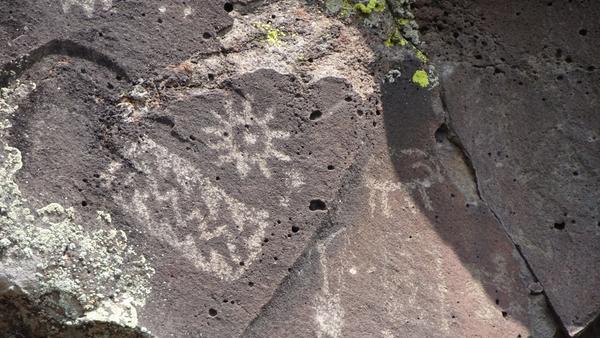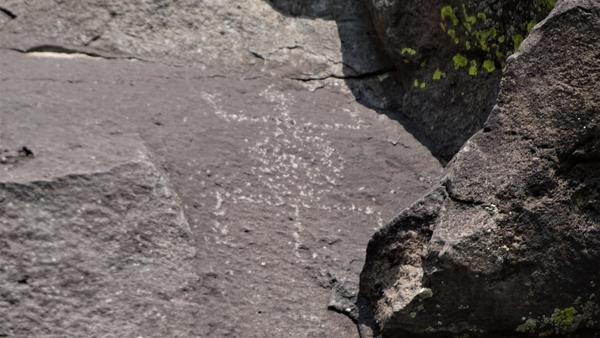Living in Place for Thousands of Years
“The Elders were wise. They knew that man’s heart, away from nature, becomes hard. They knew that a lack of respect for growing living things, soon led to a lack of respect for humans too.” — Chief Luther Standing Bear, Sicangu and Oglala Chief
Today, if you need food or clothes or a wrench, it is an easy trip to a supermarket, department store, or hardware store.
Now imagine the life of the Cahuilla people who lived on these lands for thousands of years before European contact. If you peel away those modern conveniences, this landscape seems so inhospitable, yet for those pre-contact Cahuilla it was and is home. According to Gerald Clarke, a living member of the Cahuilla Nation, there is no Cahuilla word for nature, because there is no distinction between what is and is not nature. For the Cahuilla, and for most indigenous people, people are not separate but are an integral part of nature, of plants, of animals, and of the land.
This is quite different from the perspectives of most other people, those who view themselves as separate and often above plants, animals, and the land. There is for many of us a strong appreciation for the beauty and complexity of nature, but arguably for many there is that separation, the perspective of seeing nature as a place one goes to visit, or worse to exploit, but not where you live. Clarke described a reciprocal relationship between people and nature for the Cahuilla, that if one takes, for pleasure, for food, for medicine, for building materials, then one gives back, perhaps by planting new plants, perhaps by cleaning up trash left by others, perhaps by taking actions that ensure places will be protected, and perhaps by educating others so that they too may follow that path.
Before contact with people from European, African, or Asian stock, the Colorado Desert was occupied by people of the Cahuilla and Kamia Nations. The Mojave Desert was occupied by people of the Chemehuevi, Serrano, Paiute, and Mojave Nations. These nations have been occupying these lands for thousands of years, so long that their oral histories have no memory of a time when these people did not live here; from those cultural memories they have simply always been here. They still live here, and there is an effort for many of them to reconnect with their cultural roots. Before Gerald Clarke, Katherine Siva Saubel led these efforts. Today, along with Clarke, Anthony Madrigal is another Cahuilla tribal member who is championing this process of reconnection. Living in a place over many thousands of years requires that you do not degrade and spoil the land, do not unsustainably exploit critical resources that are essential for your survival. But how?
One of the problems we face today has been referred to as the “tragedy of the commons.” The tragedy of the commons refers to when individual users, “acting according to their own self-interest, behave contrary to the common good,” with respect to lands, water, open space, wildlife habitat, and the oceans, places that are open for the collective public use. The result is often the depletion or spoiling of that shared resource. The concept originated in an essay written in 1833 by the British economist William Forster Lloyd, who used an example of the effects of unregulated grazing and the resulting degradation of common land (also known as a "common"). The concept was repackaged and given a modern context in an essay written by Garrett Hardin in 1968. Hardin later admitted that he should have coined the phrase a bit differently, saying that it is the “tragedy of the unmanaged commons," as there are examples of “commons” that are valued and protected by (almost) all those who set foot within them (i.e., our state and national parks). Today, outside of state and federal parklands, our commons are dumping grounds for garbage, unregulated off-road vehicle playgrounds, places where cacti and other succulent plants are pilfered from public lands to be sold by black market entrepreneurs. Commons include our oceans that are being overfished and where millions of tons of garbage are being dumped daily, and our air and atmosphere where carbon dioxide is being spewed at levels that are causing our planet’s climate to change. One could easily argue that at its root, the tragedy of the commons might be traced to a separation of people from nature, of people not seeing or choosing to not see the cause-and-effect connectivity between our actions and the sustainability of our communities and our planet.
Was it a culture of a connectedness with nature, held by the Cahuilla, Serrano, Chemehuevi, and others that allowed them to maintain a sustainable landscape for thousands of years, and avoid the tragedy of the commons? As Gerald Clarke and Anthony Madrigal have described those resources critical for survival, water sources, agave, mesquite, and oak patches, were not commons. Rather, each individual clan, groups with close familial ties, had exclusive access to their own patchy, but nevertheless critical, resources for their survival. It was their responsibility to manage those resources for the benefit of their clan. Poor management or over-harvesting one year could result in less resources available the next year. Outside clans who mismanaged their own resources could only access those resources of another clan if they asked for and were granted permission by the clan who held the rights to those resources. Poor resource management could result in starvation and asking other clans for charity, while sustainable management meant your clan would thrive. It is then easy to see how the culture of connectivity with nature supported the health and longevity of the clans, the tribes, and the nations.
Nullius in verba
Go outside, tip your hat to a chuckwalla (and a cactus), think like a mountain, and be safe.

